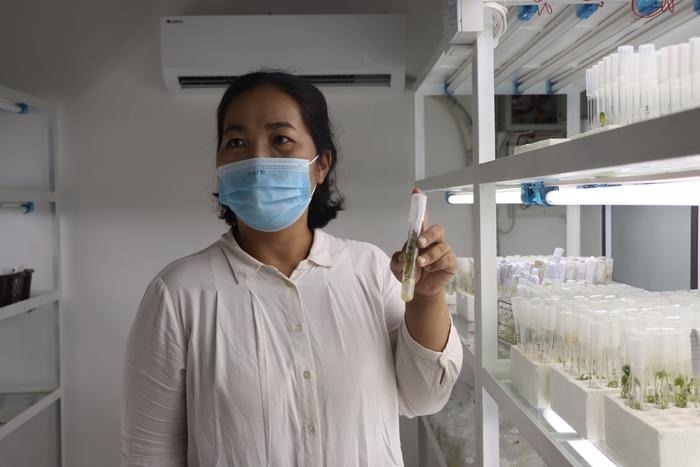The fungus genus Ceratobasidium has been identified as the cause of cassava witches’ broom disease, thanks to a recent advance in DNA sequencing technology.
 Plant pathologists based in Vientiane, Laos, have identified the root cause of cassava witches’ broom disease. Image Credit: Alliance of Bioversity and CIAT / A. Galeon
Plant pathologists based in Vientiane, Laos, have identified the root cause of cassava witches’ broom disease. Image Credit: Alliance of Bioversity and CIAT / A. Galeon
This discovery’s cutting-edge nanopore technology was initially created to track the COVID-19 virus in Colombia, but it can also be used to detect and stop the spread of plant viruses. Scientists in Laos, Cambodia, Vietnam, and Thailand will be able to save farmers’ valuable cassava harvest with the aid of the discoveries, which have been published in Scientific Reports.
In Southeast Asia, most smallholder farmers rely on cassava: its starch-rich roots form the basis of an industry that supports millions of producers. In the past decade, however, Cassava Witches' Broom disease has stunted plants, reducing harvests to levels that barely permit affected farmers to make a living.
Wilmer Cuellar, Senior Scientist, Alliance of Bioversity and CIAT
Oxford Nanopore DNA/RNA sequencing technology has been used by researchers at the Alliance of Bioversity International and CIAT to include nanotechnology in their study since 2017. This sophisticated instrument solves deeper puzzles about plant life by precisely detecting crop-damaging pathogens, including bacteria, fungus, and viruses.
When you find out which pathogen is present in a crop, you can implement an appropriate diagnostic method, search for resistant varieties and integrate that diagnosis into variety selection processes.
Ana Maria Leiva, Senior Researcher, Alliance of Bioversity and CIAT
Nanotechnology serves as an interface between the visible and the scarcely conceivable. This invention redefines the comprehension and approach to treating agricultural diseases by providing a window into the microscopic world of pathogens and plant life.
Journal Reference:
Leiva, A. M., et. al. (2024). Ceratobasidium sp. is associated with cassava witches’ broom disease, a re-emerging threat to cassava cultivation in Southeast Asia. Scientific Reports. doi:10.1038/s41598-023-49735-5